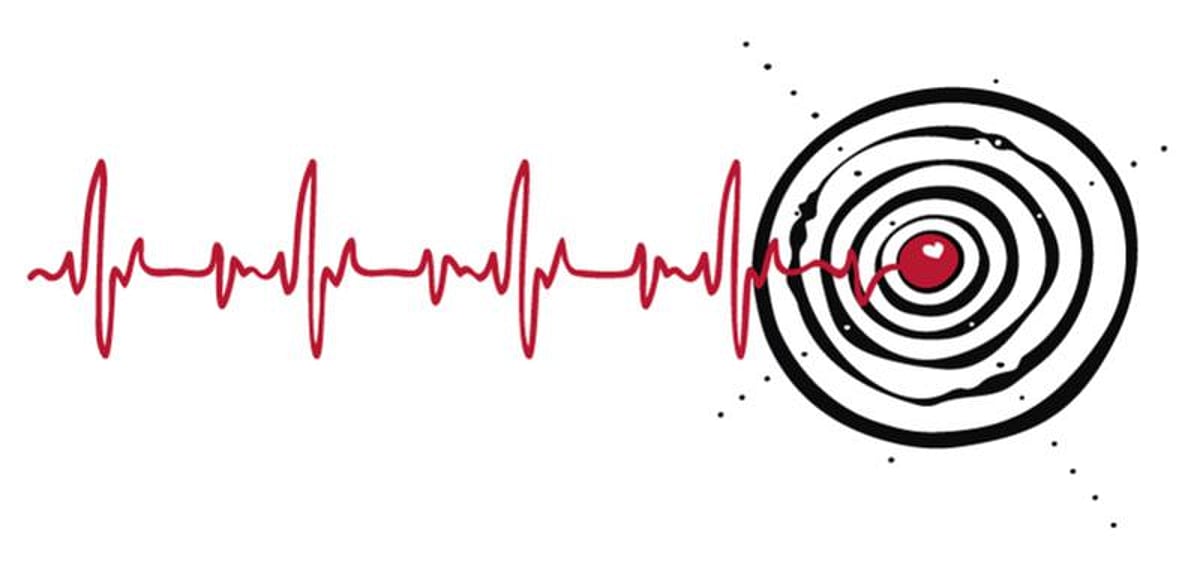Target Heart Rate and Exercise

How fast should my heart be beating?
If you're an adult, your heart should beat somewhere between 50 and 90 times per minute when you're resting, regardless of your age or sex. If you're a super-fit athlete, your heartbeat may be as low as 40 or 50 beats per minute. If you're overweight, if you're a smoker, or if you have high blood pressure, your heart rate may be a little on the fast side.
How do I measure my heart rate?
The easiest way to measure your heart rate, or pulse, is to use a heart-rate monitor. This is a band that goes around your chest and displays your heart rate on a wristwatch-like gadget. You can find these monitors, which cost $50 to $200, at most sporting-goods stores and many specialized Web sites that sell sports equipment.
Of course, if you don't have a heart-rate monitor, you can measure your pulse the old-fashioned way. First, find your pulse in your wrist or neck.
Wrist:
Hold one hand (preferably the one without a watch) in front of you, with your palm turned upward. Press the first two fingertips (index and middle) of your other hand on the outer edge of your upturned wrist (under the thumb, just below the place where your hand meets your wrist), until you can feel a strong beat. Don't use your thumb to feel for your pulse, because you can often feel a pulse in it as well.
Neck: Press your first two fingertips against the side of your neck, just below your jawbone and about halfway between your ear and your chin, until you feel a strong beat. Make sure you press gently; some experts believe that pressing hard on your neck can slow down your pulse. Once you know how to take your pulse, look at your watch or put a clock in clear view and wait for the second hand (or the second display on a digital watch) to reach the next quarter-minute. Count your pulse beats for 15 seconds; then take that number and multiply by four to get your heart rate (the number of times your heart beats in a minute).
How fast should my heart beat when I'm exercising?
If you're beginning an exercise program, try to stay within your target heart-rate zone so that you get a good cardiovascular workout without overexerting yourself. The zone is ordinarily 50 to 70 percent of your maximum heart rate. Keep to the lower end of this range for a few weeks if you're starting a new fitness routine and gradually ramp up to 70 percent of your maximum heart rate. Only very fit people should aim for more than 70 percent of their maximum heart rates while exercising.
Remember, a heart rate table can only give you a rough estimate of your heart rate while exercising. If you feel that the heart rate in the table is too hard or too easy for you, use the "talk test." If you're at the lower end of your target zone you should be able to talk easily but still feel like you're putting in some effort into your workout. At the upper end of your zone it should start to become difficult to carry on a conversation or sing a song. To double-check, take a short break halfway through your workout and measure your pulse as described above.
This table can give you a rough idea of what to shoot for. It assumes that you are upright and your feet are touching a level surface while you work out (that is, that you're walking, running, or using a treadmill or similar machine). If you're bicycling or spinning, subtract five beats from the target number; if you're swimming, subtract 10.
| Age | 50% of Max (beginner) | 70% of Max (intermediate) | 85% of Max (advanced) |
| 20-29 | 100 | 140 | 170 |
| 30-39 | 95 | 133 | 162 |
| 40-49 | 90 | 126 | 153 |
| 50-59 | 85 | 119 | 145 |
| 60-69 | 80 | 112 | 136 |
| 70-79 | 75 | 105 | 128 |
It's best to tailor your exercise heart rate to how you feel while exercising. If you're a smoker or if you have hypertension or heart disease, talk to your doctor or a certified trainer about a target heart rate that's right for you.
If you over-exert yourself, you can definitely can get your heart racing too fast. Your maximum heart rate is a guideline that tells you how hard your heart can possibly beat. The rule of thumb: Subtract your age from 220. If you're a 35-year-old, for example, your maximum heart rate is about 185. This is an estimate of how fast your heart is capable of going.
References
Centers for Disease Control and Prevention. Target heart rate and estimated maximum heart rate.
Centers for Disease Control and Prevention. Physical Activity for Everyone: Measuring Physical Activity Intensity: Target Heart Rate and Estimated Maximum Heart Rate.
American College of Sports Medicine. Selecting and effectively using a heart rate monitor. 2007.
Related Posts
Este verano, distinga los mitos de las verdades sobre los mosquitos
MARTES, 15 de agosto de 2023 (HealthDay News) -- Los mosquitos pueden ser una...
Aggression, Ages 6 to 12
My child hits, kicks, and lashes out at other kids. Should I be concerned?Yes....
Weight-Loss Surgery Could Cut Odds for Obesity-Linked Cancers in Half
FRIDAY, April 28, 2023 (HealthDay News) -- Getting bariatric surgery may help...
La vacuna contra la COVID es segura para las mujeres embarazadas, según un estudio
LUNES, 15 de agosto de 2022 (HealthDay News) -- El uso de las vacunas más...
